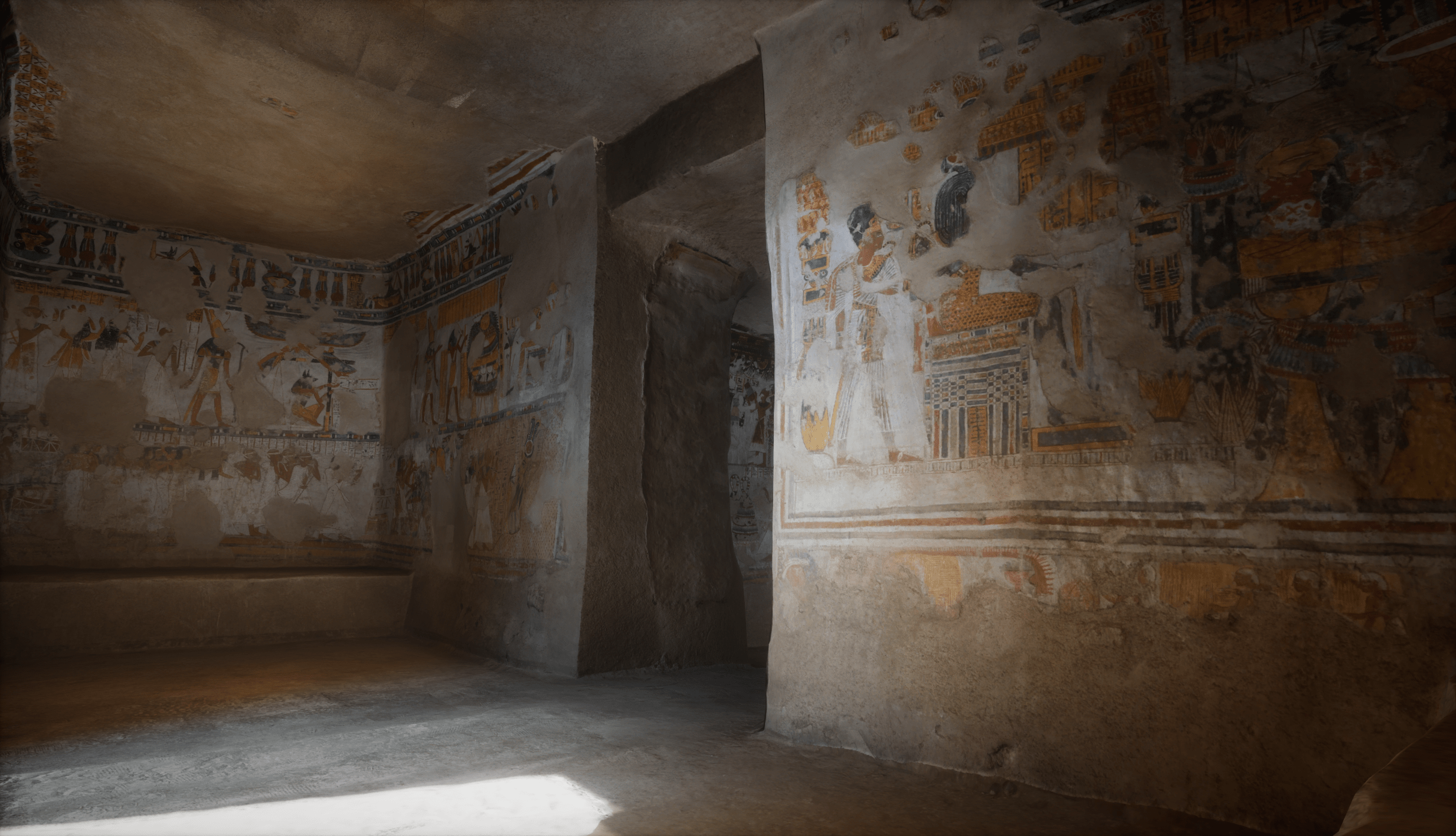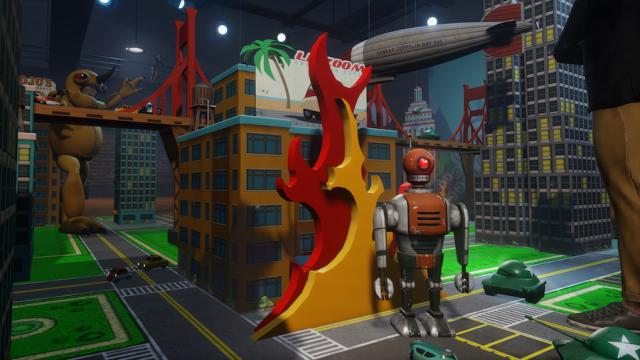In 2003, when Second Life launched, all it took was a few customisation bars and the promise of infinite possibility to get users hooked on the idea of a virtual reality. Now, in 2017, our standards are a bit higher. “Immersion” isn’t as easy to sell with a microphone, an avatar and some content creation software. Sansar, made by Second Life creator Linden Lab, is striving to meet 2017’s standards — even if it may be getting ahead of itself.
Sansar is a virtual world where users can build anything, just like Second Life. Three and a half years ago, publisher Linden Lab began crafting their own engine that lets users construct whatever they can imagine in VR. Then, basically anyone can hang out in that thing — a ball pit the size of a city, a nightclub with live DJs, a Russian language school, an underwater mansion or whatever else they fancy, with either a VR headset (or from their PC desk chair). At a New York demo today, Sansar director of communications Peter Grey called it “a WordPress for VR.”

Sansar
Right now, only 2,000 select virtual artists, builders and designers have access to Sansar, but later this summer, Sansar will open its doors to everybody with an open beta. Users may pay a small subscription for access. As Second Life‘s population dwindles around 800,000, down from 2013’s million, it was high time for a new, all-promising virtual world; and yet, it may be hard to replicate Second Life‘s weird and wonderful variety show of freakish creations and outlandish residents with VR as a selling point.
At the demo, Grey and Sansar VP of Product Bjorn Laurin wrapped me in a HTC Vive headset, which can track movement, and dropped me in Sansar‘s “Zen Garden” zone. There, I met Jason Gholston, another product director, who was in an adorable green dinosaur costume. The zone was gorgeous, with a deeply cinematic sky and finely-drawn grass textures. He told me how to walk in VR — which made me crazy dizzy, but I also can’t stomach reading in cars — and teleport around.
Following him, I entered a small, prim garden with lawn games like Cornhole. We tossed bean bags — with realistic weight — into the holes before teleporting around to a movie theatre, a play room stuffed with destructible toys, an Alice in Wonderland maze inside a child’s bedroom and, my favourite, an Egyptian tomb. In real-life, this tomb is only accessible with permission from Egypt’s Ministry of Antiquities. The level of detail a Lidar-scanned image of it betrayed in Sansar was astounding.
Also impressive were Gholston’s facial movements as we toured around the world. Sansar is developing a new facial recognition software that contorts avatars’ mouths into shapes it knows people’s faces make when they pronounce certain sounds. It’s like vocaloid software, but it blends into the whole Sansar caprice of “immersion,” an empty buzzword that took on sudden meaning inside Sansar today.

Sansar
Sansar is really pushing VR. In Sansar‘s branding, marketing and previews, a VR headset and peripherals appear to be the only way to access it, though that isn’t strictly the case. On its website, Sansar is advertised as a “platform for creating social VR experiences. . .” that will “democratize VR.” That said, thankfully, anyone will be able to explore Sansar from their PC, the same way users currently hang in Second Life. “We are going VR first,” Grey explained. “Right now, we think of Sansar as a platform primarily for creating social VR that can also be accessed by PC as opposed to an equally PC [accessible] platform.”
Grey maintained that Sansar isn’t here to improve on or replace Second Life, which he said will be around for a while. That’s good, because what made Second Life a hotbed for intense creativity was its democratic design. Free to download, though plagued by a thorny UI, Second Life was hailed as an egalitarian way of carving out spaces on the early internet. With VR’s financial and technical barriers, Sansar will be harder to access on Linden Lab’s terms than Second Life. When pushed on the viability of a VR-forward social platform, Laurin said, “Second Life is in its 14th year. We’re not doing this for four months or one year. We’re just starting early.”
What made Second Life great was the users who flocked there to create. Many of those users were people who, in 2003, sincerely believed that virtual worlds were the future of commerce and human relations. In 2017, it’s clear that they weren’t totally right, but they were pioneers all the same, just as Sansar‘s HMD-wielding early creators are now. Hopefully, Sansar‘s push for VR won’t scare off its best asset.

Comments
One response to “Hands-On With Sansar, The New Second Life”
I like the idea of this.
I had an idea a while back after seeing the doomed Shadow Moses pivot from a recreation of Metal Gear Solid into a sort of fan museum / shrine thing. You could create these iconic spaces from other games and use them as a sort of VR hangout for fans. In the MGS example you could have a fans hang out in the heliport area. But beyond games you could set up say the coffee shop from Friends, or the Great Hall from the Red Keep for GoT fans to hang out and discuss theories.
It looks like Sansar is basically this, provided creators step up and are able to create these places